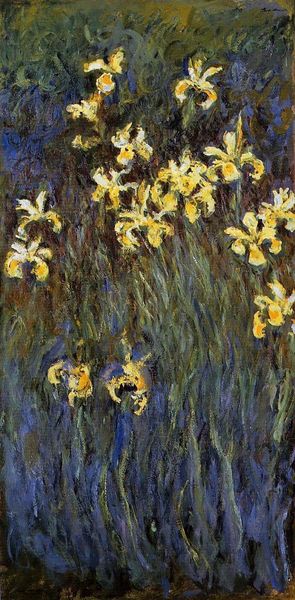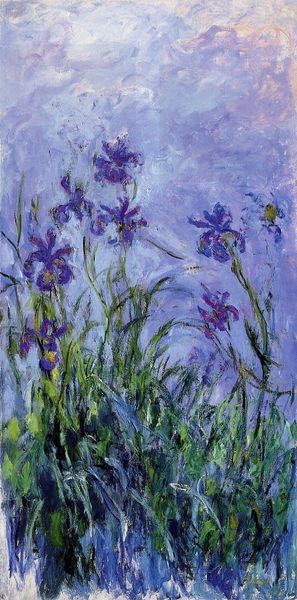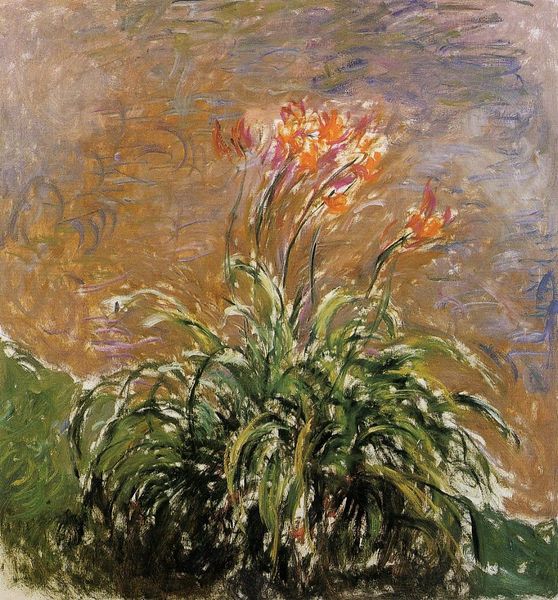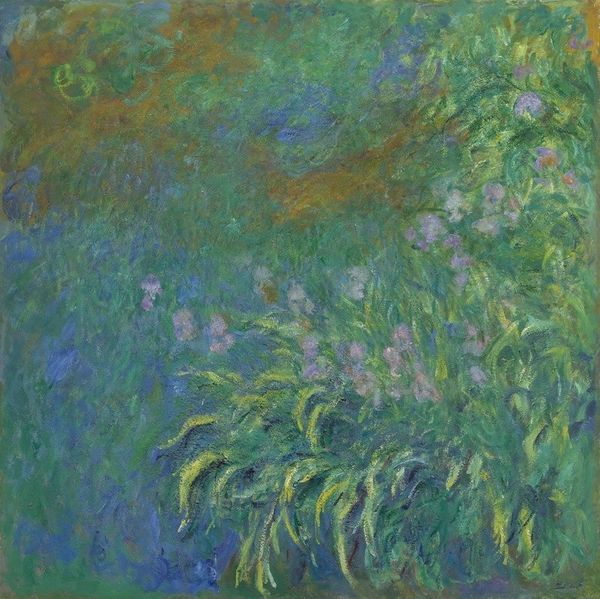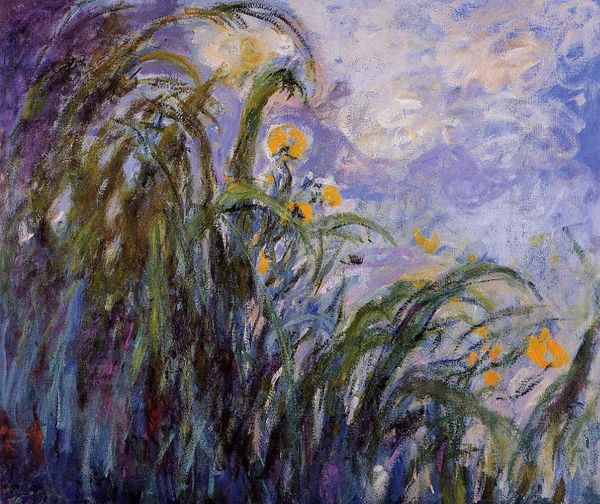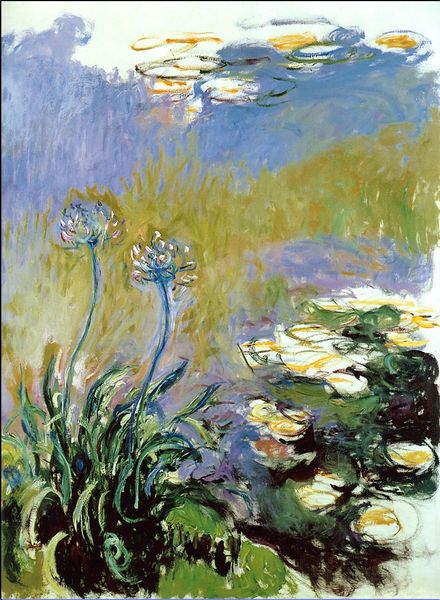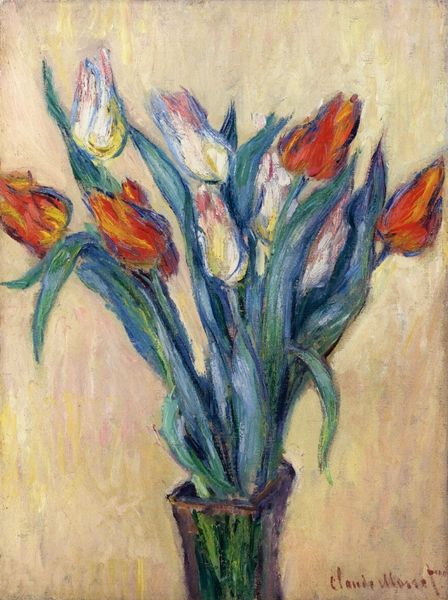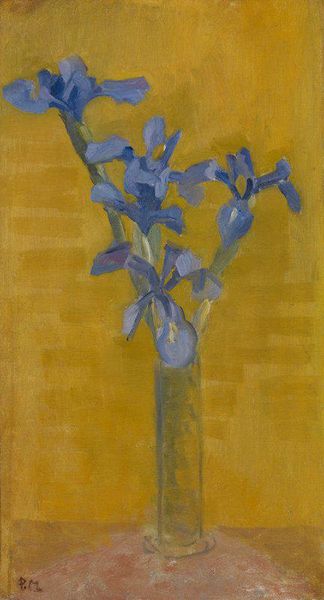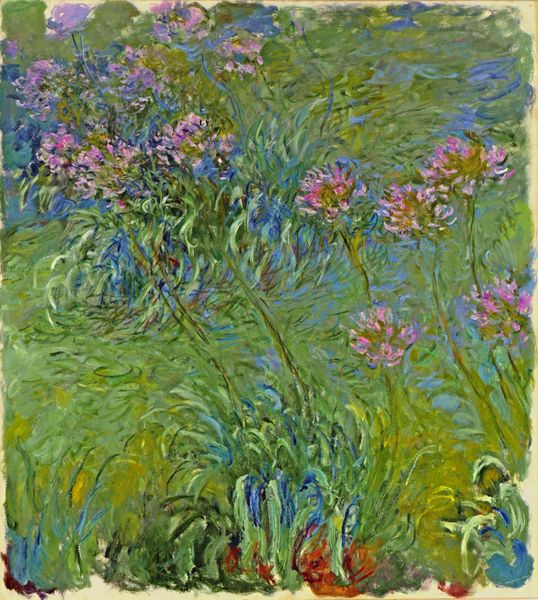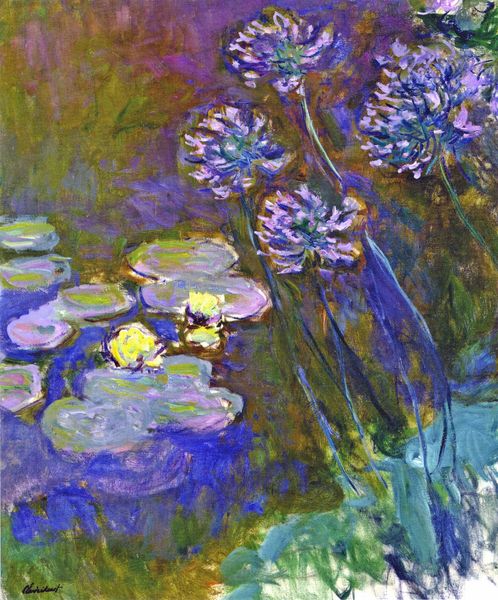
Copyright: Public domain
Editor: This is Claude Monet’s "Yellow Irises" from 1917, rendered in oil paint. I’m struck by how the bold yellow of the irises contrasts with that intense, almost overwhelming, blue background. How do you read that colour play formally? Curator: It is precisely that chromatic relationship which forms the core of this piece's aesthetic impact. Observe how Monet uses complementary contrast: the yellow, a warm, advancing colour, leaps forward against the cool, receding blue. What effect does this advance/recede dynamic have on the depicted space? Editor: It makes the flowers feel very present, almost pushing into our space, while the background seems almost dreamlike, depthless. The textures are also so distinct - how do those brushstrokes come into play? Curator: Precisely. The loose, gestural brushwork, characteristic of Impressionism, does more than simply depict; it activates the surface. Note how the vertical strokes of the leaves create a sense of upward movement, anchoring the more fluid, gestural depiction of the flower petals themselves. Can you see any tension in this juxtaposition of textures? Editor: Absolutely. There’s a rigidity to those green stalks that’s a stark contrast to the delicate, almost melting, form of the irises. That must enhance the natural, life-like rendering of flowers that bloom and wilt. Curator: Precisely. The structural arrangement thus informs the symbolic language, representing ephemerality through formal qualities such as texture, brushwork and compositional organisation. Editor: That makes it so much more than just a pretty picture of flowers! It's all in the forms and the colours! Curator: Indeed, our attention to the visual structures allow the work’s meanings to unfold.
Comments
No comments
Be the first to comment and join the conversation on the ultimate creative platform.

